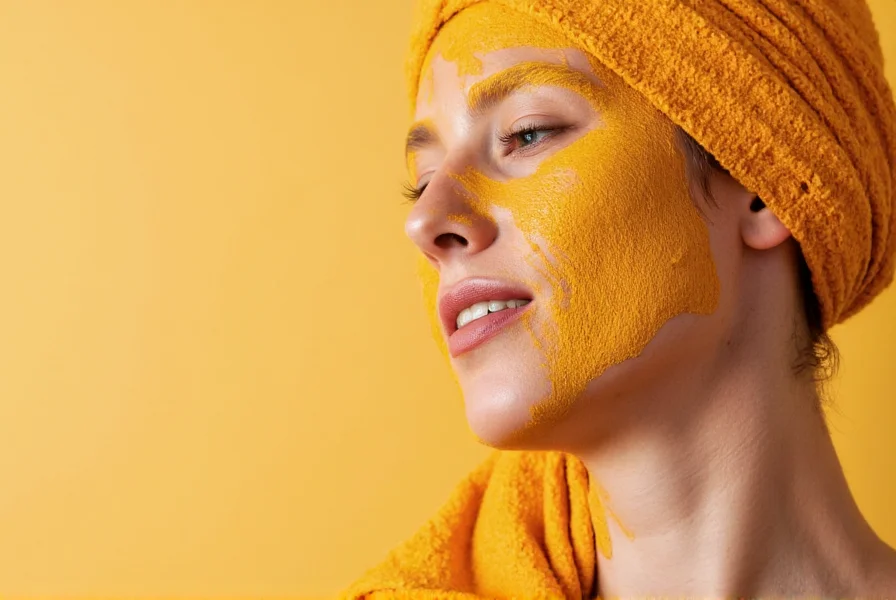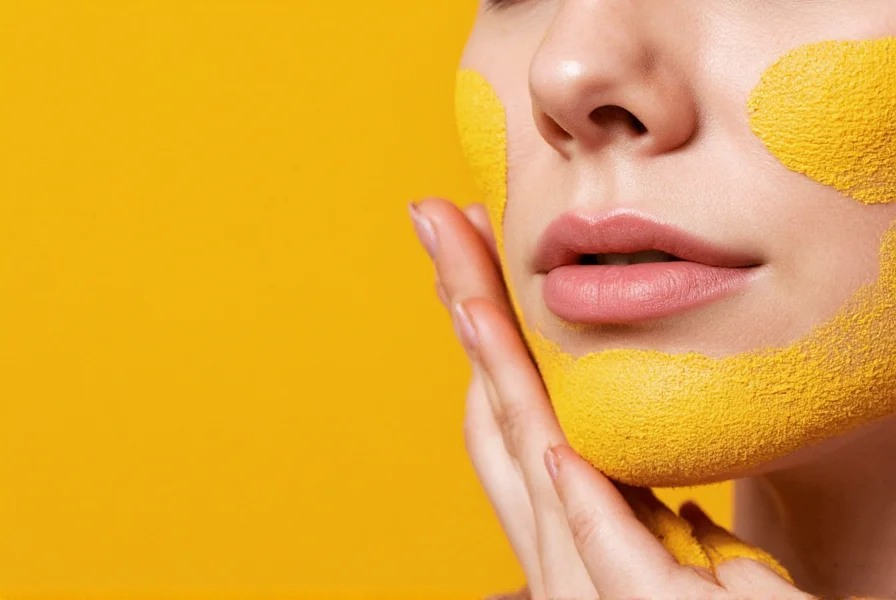For centuries, turmeric has been a staple in traditional Ayurvedic and Chinese medicine for skin health. Modern science is now validating many of these ancient claims while revealing important limitations. This comprehensive guide examines what current research tells us about turmeric's effects on skin, separating evidence-based benefits from popular myths.
The Science Behind Turmeric and Skin Health
Turmeric's primary active compound, curcumin, demonstrates significant biological activity. Multiple studies published in the Journal of Clinical and Aesthetic Dermatology confirm curcumin's potent anti-inflammatory and antioxidant effects, which directly address common skin concerns. Unlike many natural remedies with anecdotal support only, turmeric has substantial scientific backing for specific applications.
Researchers have identified several mechanisms through which turmeric benefits skin:
- Reduces inflammatory markers like TNF-α and IL-6 that contribute to acne and eczema
- Neutralizes free radicals that accelerate skin aging
- Supports collagen production for improved skin elasticity
- Exhibits antimicrobial properties against acne-causing bacteria
- May enhance wound healing through growth factor modulation
Evidence-Based Skin Benefits of Turmeric
Let's examine what research actually supports about turmeric's effects on specific skin conditions:
| Skin Concern | Research Support | Recommended Application |
|---|---|---|
| Acne | Moderate (reduces inflammation and bacteria) | Topical mask 1-2 times weekly |
| Eczema/Psoriasis | Emerging (reduces inflammation) | Low-concentration creams |
| Hyperpigmentation | Limited (mild brightening effect) | Combined with other brightening agents |
| Wound Healing | Strong (accelerates tissue repair) | Medical-grade formulations |
| Anti-Aging | Promising (antioxidant protection) | Regular topical application |
How to Use Turmeric for Skin Safely
While turmeric offers potential benefits, improper use can lead to disappointing results or skin irritation. Follow these evidence-based guidelines for safe application:
Patch Testing Protocol
Always perform a patch test before full facial application. Mix a small amount of turmeric with water or honey, apply to your inner forearm, and wait 24 hours. Discontinue use if you experience redness, itching, or swelling.
Effective DIY Turmeric Face Mask Recipe
This balanced formulation minimizes staining while maximizing benefits:
- 1 teaspoon turmeric powder (sifted to remove coarse particles)
- 1 tablespoon plain yogurt (provides lactic acid for gentle exfoliation)
- 1 teaspoon honey (natural humectant and antimicrobial)
- 1 teaspoon oat flour (soothes and reduces potential irritation)
Mix ingredients thoroughly. Apply to clean skin for 10-15 minutes maximum. Rinse with lukewarm water using gentle circular motions. Follow with moisturizer. Use no more than twice weekly.

Potential Drawbacks and Limitations
Despite its benefits, turmeric isn't suitable for everyone. Understanding these limitations prevents negative experiences:
The Staining Challenge
Turmeric's vibrant yellow pigment can temporarily stain light-colored skin. This effect typically fades within 24 hours but can be minimized by:
- Using lower concentrations (¼ to ½ teaspoon per mask)
- Adding ingredients like chickpea flour that absorb excess pigment
- Applying at night before bedtime
- Thoroughly cleansing after the recommended time
Skin Sensitivity Considerations
Some individuals experience contact dermatitis from turmeric. Those with sensitive skin should start with extremely diluted formulations (⅛ teaspoon per mask) and gradually increase if no reaction occurs. Discontinue immediately if irritation develops.
Who Should Avoid Turmeric on Skin
Certain individuals should exercise caution or avoid topical turmeric:
- People with known sensitivity to ginger or other rhizomes
- Those scheduled for surgery within two weeks (turmeric may increase bleeding risk)
- Individuals using prescription retinoids or strong exfoliants
- People with very fair skin concerned about temporary staining
- Anyone with open wounds or compromised skin barriers
Commercial Turmeric Skincare Products: What to Look For
If DIY formulations seem daunting, many quality commercial products incorporate turmeric effectively. When selecting products, prioritize those that:
- Use encapsulated curcumin for better absorption and reduced staining
- Combine turmeric with complementary ingredients like niacinamide
- Specify the concentration of active curcuminoids
- Come from brands with transparent sourcing practices
- Have undergone third-party safety and efficacy testing
Realistic Expectations for Turmeric Skincare
While turmeric shows promise, it's not a miracle cure. Manage expectations by understanding:
- Natural remedies work gradually—expect 4-8 weeks of consistent use for visible results
- Turmeric complements but doesn't replace medical treatments for serious conditions
- Individual results vary significantly based on skin type and condition severity
- Quality of turmeric matters—organic, fresh powder yields better results than old, degraded spice
Conclusion: Is Turmeric Worth Trying for Your Skin?
Turmeric offers legitimate, research-supported benefits for many skin concerns, particularly inflammation-related issues like acne and eczema. Its antioxidant properties also contribute to overall skin health and protection against environmental damage. However, realistic expectations and proper usage are crucial for positive experiences.
For most skin types, incorporating turmeric through carefully formulated masks or quality commercial products can enhance your skincare routine. Always prioritize patch testing, start with minimal concentrations, and discontinue use if irritation occurs. When used appropriately, turmeric represents a valuable addition to evidence-based natural skincare approaches.











 浙公网安备
33010002000092号
浙公网安备
33010002000092号 浙B2-20120091-4
浙B2-20120091-4